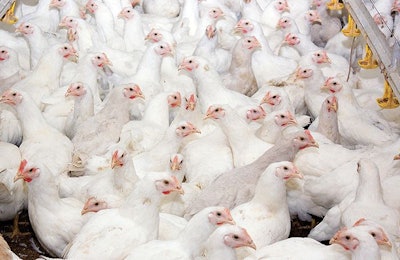
Sustainability, it’s now considered ‘table stakes’ for the food Americans buy and eat. But, how deeply do consumers understand sustainable food practices – and what do they expect from food producers?
The National Chicken Council (NCC) set out to help answer these questions through a nationwide survey earlier this year. Benchmarking perceptions and attitudes related to broiler chicken production and its impact on the environment is key to building meaningful strategies – and fosters even greater transparency into food production. Based on what we hear, we can deliver accurate information to consumers and influencers in ways that will resonate, and, ultimately, build trust.

Tom Super (National Chicken Council)
The chicken industry maintains one of the lowest environmental footprints in animal agriculture. But not surprisingly, knowledge among consumers of the environmental impact of chicken is low.
However, environmental impact is quickly closing the gap on factors people care about when it comes to driving purchase decisions. In fact, according to our survey, when it comes to factors driving purchase decisions today, the environmental impact of chicken is as important as animal welfare, while taste and price continue to be the top two drivers of purchase decisions. Interestingly, nearly half of those surveyed say they would eat more chicken if they learned that chicken production has become more sustainable in response to consumer demand.
Chicken industry environmental impact
While knowledge of the environmental impact of the chicken industry is low, the importance of this topic continues to grow. For the industry, this means we must continue to focus on sustainability. Only half of survey participants are moderately knowledgeable about chicken’s impact on the environment, while three-quarters are moderately knowledgeable about how chicken is produced – indicating there is work to be done to tell chicken’s sustainability story.
Gaining trust among consumers and influencers starts with the simple act of listening. Listening to how, when, where and from whom our key audiences are tuned in and open to messages about our farming practices will help us better understand what drives their perceptions (and misperceptions). By gaining insights about influential channels and voices driving consumer perceptions, the industry can better hone in on the points of activation and communication strategies that can get attention, help shape more accurate perceptions and gain trust.
Our research found that the voices of chicken producers – particularly family farmers – resonate loudly with consumers, who want to hear the stories of how they grow and raise birds on their farms. Sharing videos and information on Facebook and social channels are great venues to engage with audiences about the sustainable practices in chicken production, too.
Misconceptions abound surrounding the effects of chicken production on key environmental issues like pollution, water quality and transportation. Consumers we surveyed believe these issues have a high environmental cost, but their knowledge and understanding of these issues is low. These are key topics to address via content and programming to help consumers better understand how they relate to sustainability practices on chicken farms across the nation.
At the same time, misconceptions still exist surrounding production practices -- most still believe broiler chickens are produced using hormones. This indicates we need to continue to help consumers better understand industry-wide welfare standards that are core to the American-raised chicken they buy and eat.
NCC has resources at the ready to help break through to audiences, including Chicken Check In, frequently asked questions, a virtual reality (VR) video series, a glossary of chicken labeling terms and more.
As an industry, we have important work ahead of us to help consumers learn more about what chicken producers are doing today to take care of the environment for the future. Understanding consumers’ perceptions – and arming them with answers – play a key role in this journey.
Survey Methodology: 15-minute online survey (fielded January 14-23, 2019) of 1,000 general population Americans aged 18-64 years old who eat chicken (margin of error +/- 3.1%) and 500 Food eVangelists (margin of error +/-4.4%) Food eVangelists are defined as Americans who are particularly influential about food-related topics
















